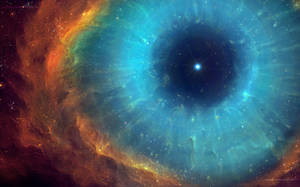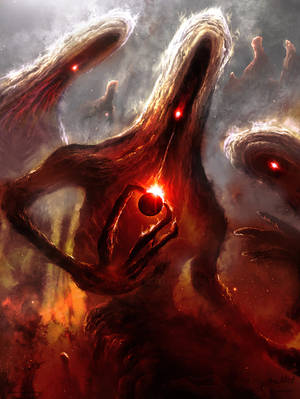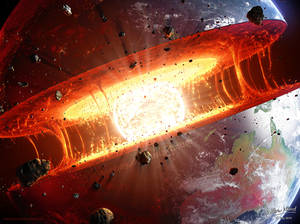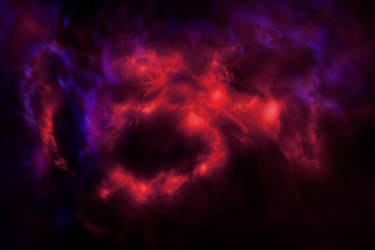Space Art week
One of the most common complaints about space art is that it lacks originality. In this article I want to explore the limitations of this complaint. First we will give it its due, then we will show how that complaint simply reflects a lack of vision. Along the way, we will see how innovation has actually occurred among space artists here on DeviantArt.
Classic Space Art and Originality
When thinking of space art and its lack of originality, a few scenes come to mind. These scenes are often imitated and repeated in a fashion that gives rise to the sense of unoriginality. This suggests that these scenes have been established for a while, and little innovation is taking place. In fact, this 'unoriginality' can often be an homage to classic scenes and ideas. If it is not well done, then 'unoriginality' hangs heavily over the piece, but if done well it is tasteful and the unoriginality is insignificant. The latter I will call 'refinement', which I will cover in the next section. This section will tableaux what the classic scenes and ideas are, as we come across them on DA. Along the way, I will mention their significance for the topic of originality. Rather than dilate upon bad works -- which you can judge for yourself -- I want to pay homage to the classics of the DA space art scene which have often themselves been copied. If I have done this correctly, then you should immediately recognise the classic ideas of the following pieces. This in turn suggests a lesson for originality today -- the classics were more or less original, and a great and original piece today could be tomorrow's classic.
Let's begin with the most simple ideas and move up towards more complex ones. Something in blue or orange and simply displaying a planet and a moon may be the most commonly imagined space scene, just like this original progenitor image from 2003:

Or in orange, like this:

The blue work above by dinyctis was a huge inspiration on the early DA space art scene. In fact, you can see my own unconsciously inspired imitation here:
The orange work by PlasmaX7 illustrates another classic space art colour in an early piece done well. Although dinyctis was original on the scene, PlasmaX7's work at this relatively early point was tasteful, rather than plain unoriginal. This illustrates the development of originality (newly established work) to tasteful work (variation on a theme). Each new piece solidifies an idea as being classic, and also implies the need of following up in your own style.
Another well-established theme, a little more advanced than the preceding one, is a work with smudged nebulae and asteroids floating about, like this early piece:
It's relatively hard to fail at variations on this theme, because nebulae can be crafted into so many shapes. Nevertheless, the general idea is one of the most obvious to anyone coming across space art. Once again, 'unoriginality' isn't really a complaint here -- but this is a classic idea and if you want to tackle it, try your own style and interesting variations. This piece does both and is unmistakably by shirosynth -- yet it was also an early trend-setting piece which has not aged into anything 'unoriginal' so much as tastefully unique.
And another innovation accomplished early on was 'the planet with an explosive impact':
This is one of the most eye-catching scenes and has been used many times all over the place (including in my own gallery, of course). I think this is something we need to work on innovating upon -- often the other good examples look quite similar to this very early and almost perfected example, taking a diagonal slant and rule of thirds focus. In section three, 'Something Completely Different', we will see some radical departures on the explosive scene.
Something with spaceships, especially in merely outline form, is also well done:
I think absolutehalo was the first to do this. Many others copied him, but often too similarly. Once again, I myself did this too. It's good to imitate in the process of learning, but it's best to keeping learning and push the boundaries. In the next section, I'll give an example which imitates this theme of outlined spaceships but combined with a truly unique style.
Other celestial phenomena have also been depicted early on. For example, the simple galaxy piece:
Once again dinyctis established this scene early on at DA. This is perfectly tasteful to this day. I'm not quite tired of the scenes that pop up either -- there's still plenty to do with galaxies. Nevertheless, here's one which has established a take on them early on. Something to keep in mind for the sake of tastefulness and originality.
And finally, I think the last scene which now seems unoriginal is the panoramic 'space above terrain', or terraspace/landscape space art:

This scene has been burned into our minds by alyn and set off a craze for years. Here is perhaps alyn's masterpiece of the style, or one of them. I often feel that he did it so well, that most other similar works merely imitated. Nevertheless there is plenty to innovate upon, and others have -- but for that, let's move onto the next sections concerning this very topic of innovation.
#1 Refinement
Sometimes, all you need to do to be original is to do something unoriginal, but really well! To clarify: if you refine your craft then your style will be stamped upon your work. Thus an otherwise unoriginal scene can be accomplished in your own original way. It's about doing a classic scene with excellence. Examples below.
Once again beginning with the more simple and moving to the more complex. Here are some innovations on the classic colour and planet combination:
Here is the example combining the outlined spaceship approach with tasteful composition and unique style:
This work clearly shows the handiwork of JoeyJazz. It's a classic scene of planet-moon and nebulae, and it adds the outlined spaceships on top of that. What's unique about this work is the slant of the ships relative to the planet and the way this matches so well with the nebulae in motion and shape.
Let's consider the swirling planet/nebulae scene again with a couple of examples accomplishing it in a highly unique way:


Here SamODJ has really taken the classic scenes and made them his own. The first example (red) combines delightful texture and light with a really unique composition, despite the altogether expected objects (planet and nebulae). The second example is even more original, despite once again being a typical space setting. It seems unexpected -- one will search hard for similar pieces -- and yet it is the planets and nebulae theme again. A perfect example of innovating upon a classic scene.
The simple nebulae focused theme has also been innovated upon well, with interesting details and shapes. Consider the following examples:
The simple nebulae focused theme has also been innovated upon well, with interesting details and shapes. Consider the following examples:
Each of these works seems organic and similar enough to the real thing in some way, and yet they also represent some unique terrestrial object or humane icon. The possibilities are limitless, and this really shows what I mean by the variability of nebulae not growing old.
Finally, let's consider the development of the space and landscape theme. By taking a more careful approach to the landscape portion and the integration of land and space, some true innovations really occur:
Each of these works combines a unique style with a unique way of integrating the two halves of the piece (space and landscape). They are unique scenes, despite embodying the same classic landscape and space idea.
I think that all of these images demonstrate how originality can occur despite recurring ideas ('planets in space', 'swirling nebulae', 'outlined spaceships', 'space with a landscape foreground'). One can imitate, but keep working at it until you can work your own style into the classic scene. Variations will pop up as you work, and here's some great inspiration of how that can occur. The possibilities are endless!
#2 Something Completely Different
There are still many themes with which to innovate in; there are really no limits to what you can do if you're willing to expand your technique to fulfil a vision. The following images show off themes that still haven't been over-done, providing examples of how some artists have extended the repertoire of themes in space art. I'll begin with the highly unexpected and move out into the least expected. This time, I'll let the examples do the talking. With the preceding section, we covered what you can really do to push variations on classic themes. Here, we will take a look at particularly unique ideas as they show up. In the next section, I'll briefly consider some of the thinking behind innovation in both variation (just covered under 'refinement') and especially new ideas (this section).
Comets:
New takes on exploding planets:
Solar sails, exploration and out-posts:
Ring formation, with an additional twist from the expected:
Solar sails, exploration and out-posts:
Ring formation, with an additional twist from the expected:
Panspermia:
Artificial habitats:
Planetary construction:
Planet-sized spaceships:

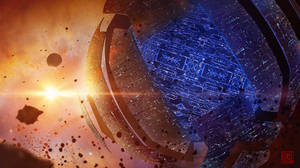

Surreal:
There are no doubt more, but this fairly representative sample is enough to provide for inspiration. I think you should have quite a lot of food for thought now!
Taking the simple themes, one can see some innovation arising from simple combinations. From a simple planet-centric piece or nebulae-centric piece, we got the planet-nebulae piece. One could add spaceships. One could add landscapes. And you could combine the ideas of the planet-piece with the galaxy piece and have a new example -- a planet-galaxy piece (actually, you will find these on DA as well). Or you could hunt for a completely new theme like gas giant collisions, thinking outside of the art already floating around on DA. And once again, you could combine such a unique theme with another pre-existing theme, such as the landscape theme -- thus, colliding gas giants foregrounded by a unique landscape (haven't seen this one yet!). This is also a reason why a storyline can be helpful -- what else is a story but a neatly (and powerfully) organised combination of ideas? Once you start thinking about it, the sources of inspiration are endless. Just seeing or hearing of a few ideas, you can combine them endlessly. It just takes effort and interest. Thus, the combination of ideas is the basic source of originality whether it be a variation on a theme or even further afield, something 'completely' different. Keep practicing and combining, and you'll never run out of ideas!
There has been no intention of making this article an exhaustive account of originality, or of originality in space art. But it should be sufficient to see how space art need not be dull or particularly unoriginal. Indeed, the principles of originality which apply to space art really apply with anything; the complaint can be no slight to space art in particular. Really, it's all about quality and 'brainstorming'; thinking through the possibilities and mastering the techniques.
#3 Brainstorming
Taking the simple themes, one can see some innovation arising from simple combinations. From a simple planet-centric piece or nebulae-centric piece, we got the planet-nebulae piece. One could add spaceships. One could add landscapes. And you could combine the ideas of the planet-piece with the galaxy piece and have a new example -- a planet-galaxy piece (actually, you will find these on DA as well). Or you could hunt for a completely new theme like gas giant collisions, thinking outside of the art already floating around on DA. And once again, you could combine such a unique theme with another pre-existing theme, such as the landscape theme -- thus, colliding gas giants foregrounded by a unique landscape (haven't seen this one yet!). This is also a reason why a storyline can be helpful -- what else is a story but a neatly (and powerfully) organised combination of ideas? Once you start thinking about it, the sources of inspiration are endless. Just seeing or hearing of a few ideas, you can combine them endlessly. It just takes effort and interest. Thus, the combination of ideas is the basic source of originality whether it be a variation on a theme or even further afield, something 'completely' different. Keep practicing and combining, and you'll never run out of ideas!
Conclusion
There has been no intention of making this article an exhaustive account of originality, or of originality in space art. But it should be sufficient to see how space art need not be dull or particularly unoriginal. Indeed, the principles of originality which apply to space art really apply with anything; the complaint can be no slight to space art in particular. Really, it's all about quality and 'brainstorming'; thinking through the possibilities and mastering the techniques.











